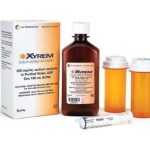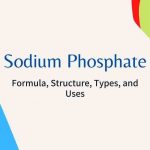Contents
- 1 What Is Considered Stroke-Level High Blood Pressure?
- 1.0.1 What are the symptoms of high blood pressure?
- 1.0.2 What causes blood pressure to spike suddenly?
- 1.0.3 What are the different types of hypertension?
- 1.0.4 What are treatment options for high blood pressure?
- 1.0.5 What are the side effects of blood pressure medication?
- 1.0.6 When should you go to the ER with high blood pressure?
- 1.0.7 What is a hypertensive crisis?
What Is Considered Stroke-Level High Blood Pressure?
A severe increase in blood pressure (BP) that can lead to a stroke is called a hypertensive crisis. Extremely high blood pressure can damage blood vessels and weaken arteries in the brain, increasing the risk of stroke.
Blood pressure readings above 180/120 mmHg are considered stroke-level, dangerously high, and require immediate medical attention.
Blood pressure readings of 160/100 mmHg are considered hypertension stage II according to the table below.
High blood pressure, or hypertension, is the leading cause of strokes in the U.S. However, understanding risk factors and blood pressure readings can help people seek appropriate treatment:
| Less than 120 | Less than 80 |
| 120 to 129 | Less than 80 |
| 130 to 139 | 80 to 89 |
| 140 or above | 90 or above |
| More than 180 | More than 120 |
What are the symptoms of high blood pressure?
While hypertension is sometimes called the silent killer because most people show no symptoms, a few common signs of the condition include:
- Severe headaches
- Fatigue
- Confusion
- Pounding in the chest, neck, or ears
- Dizziness
- Sweating
- Chest pain
- Vision problems
- Trouble sleeping
Rare symptoms may include:
- Nosebleed
- Nausea and vomiting
- Difficulty breathing
- Irregular heartbeat
- Blood in the urine
- Nervousness
- Facial flushing
- Blood spots in eyes
What causes blood pressure to spike suddenly?
Hypertension is often called a “silent killer” because it may cause no noticeable symptoms.
It can be a result of the following:
- Age (BP increases with age)
- Gender (men are more likely to develop hypertension than women)
- Family history
- Unhealthy lifestyle (lack of exercise and consumption of junk and processed foods are modifiable factors)
- Excessive salt intake
- Decreased or no physical activity
- Obesity
- Diabetes
- High cholesterol
- Stress
- Pregnancy
- Alcohol consumption
- Smoking
What are the different types of hypertension?
There are two types of hypertension:
- Primary hypertension or essential hypertension is the most common type, and there is no known cause for it. This type usually takes many years to develop and is often the result of lifestyle, environment, and older age.
- Secondary hypertension is caused by another health problem or medication:
- Kidney problems
- Sleep apnea
- Thyroid or adrenal gland problems
- Side effects of some medications
What are treatment options for high blood pressure?
Treating high blood pressure may include a combined approach of dietary changes, medication, and exercise. The goal is to lower your blood pressure and thus lower your risk of developing health problems caused by high blood pressure, such as heart disease.
- Prehypertension
- If your BP is between 120/80 mm Hg and 130/80 mm Hg, your doctor may recommend measures such as losing weight or quitting smoking to help bring blood pressure down to a normal range. Medication is rarely used at this stage.
- If your BP is above 130/80 mmHg but below 140/90 mmHg, your doctor may prescribe medication in addition to lifestyle changes and regular blood pressure monitoring.
- If your BP is above 140/90 mmHg, your provider may start you on more rigorous medications and recommend stricter lifestyle changes. Medications may include:
- Diuretics or water pills help kidneys remove some salt (sodium) from the body. As a result, blood vessels do not have to hold as much fluid and normal blood pressure can be maintained.
- Beta-blockers lower stress on the heart and blood vessels.
- Angiotensin-converting enzyme inhibitors (also called ACE inhibitors) help relax blood vessels and lower blood pressure as a result.
- Angiotensin II receptor blockers (also called ARBs) work the same way as angiotensin-converting enzyme inhibitors.
- Calcium channel blockers relax blood vessels by reducing the amount of calcium entering cells.
- Alpha-blockers help relax the vessels and lower blood pressure as a result.
- Centrally-acting drugs send signals to the brain and nervous systems to relax the vessels.
- Vasodilators help muscles in the walls of blood vessels to relax.
- Renin inhibitors are a new type of medication that reduces the number of angiotensin precursors, relaxing blood vessels.
What are the side effects of blood pressure medication?
Common side effects of high blood pressure medicines include:
- Cough
- Diarrhea or constipation
- Dizziness or lightheadedness
- Erection problems
- Feelings of nervousness
- Feelings of being tired, weak, drowsy, or lacking energy
- Headache
- Nausea or vomiting
- Skin rash
- Unintentional weight loss or weight gain
When should you go to the ER with high blood pressure?
A reading of 180/120 mm Hg or higher is considered a hypertensive crisis and requires immediate medical attention.
According to the American Heart Association (AHA), a reading of 180/120 mm Hg or higher is termed a hypertensive crisis and requires immediate medical attention. If this reading is consistent two times in a row, five minutes apart, then you must head to the nearest emergency room immediately.
Blood pressure (BP) is the force applied against the walls of the arteries by the blood that the heart pumps through the four chambers into major arteries that transport blood throughout the body through the circulatory system.
According to the AHA, normal BP in adults is 120/80 mm Hg. However, according to the new guidelines issued by the AHA, the goal BP for all adults is now less than 130/80 mm Hg.
According to guidelines by the American College of Cardiology/American Heart Association, hypertension is a term to describe high BP that measures consistently above 130/80 mm Hg or higher.
Hypertension affects one-third of Americans and is a considerable risk factor for cardiovascular diseases such as heart attack and heart failure, stroke, renal diseases, organ damage, and death.
What is a hypertensive crisis?
Depending on the severity, a hypertensive crisis is divided into two types:
- Hypertensive urgency: You are diagnosed with this condition if you have an elevation of blood pressure of more than 180/120 mm Hg with no associated symptoms. In this condition, you can wait for five minutes and then take the readings again. If the blood pressure measurements are the same, seek medical help immediately.
- Hypertensive emergency: This stage requires immediate medical attention and hospitalization as it can lead to organ damage. It is defined as severe high BP that exceeds 180/120 mm Hg, along with the presence of acute target organ injury with symptoms such as:
- Chest pain
- Severe headache
- Lightheadedness or dizziness
- Numbness or weakness
- Vision changes
- Unable to speak
- Bleeding from the nose
- Shortness of breath
- Palpitations
- Excessive sweating
- Fatigue
- Confusion
By clicking "Submit," I agree to the MedicineNet Terms and Conditions and Privacy Policy. I also agree to receive emails from MedicineNet and I understand that I may opt out of MedicineNet subscriptions at any time.


